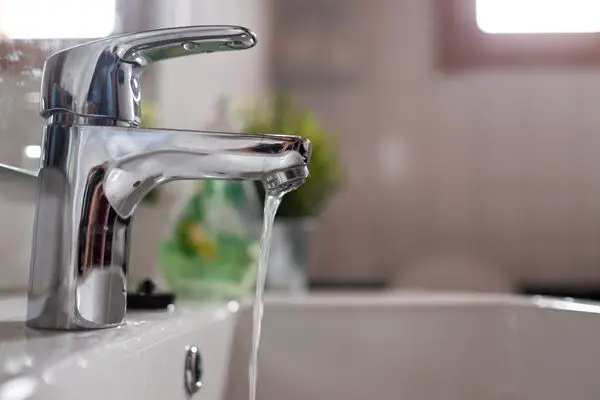Inspecting your new house after the developer finishes construction is a critical step in ensuring that the house meets your expectations and standards before you move in. Here are some tips for inspecting your new house:
- Bring a checklist: It is essential to bring a list of what you expect from the house. It is possible to list items to check off, such as flooring, walls, ceilings, electrical and plumbing systems, fixtures, and appliances.
- Inspect each room: Take the time to carefully inspect each room in the house. Inspect the walls, ceilings, and floors for any damage, scratches, or other flaws. Look for any signs of water damage or leaks, and ensure that all fixtures and appliances are properly installed.
- Check the electrical and plumbing systems: Ensure all electrical outlets and switches function properly. The plumbing fixtures should be in good working order and leaks should not be present.
- Inspect the windows and doors: Ensure the windows and doors function properly. To prevent drafts or leaks, make sure they are properly sealed.
- Check the HVAC system: Inspect the heating, ventilation, and air conditioning system to ensure it functions properly. Make sure that each room has proper airflow and temperature control.
- Take pictures: If you find any problems during the inspection, photograph them. Providing this documentation will assist you in documenting the problem and providing evidence to the developer for them to resolve it.

- Hire a professional home inspector: You may consider hiring a professional home inspector to conduct a more thorough property inspection. The services of a professional inspector can assist you in identifying potential issues that you may have overlooked during your inspection.
- Check the exterior: Examine the foundation, siding, roof, gutters, and downspouts on the house’s exterior. Check the foundation for cracks or damage, and ensure that the siding is installed correctly and in good condition. Ensure that there are no missing or damaged shingles on the roof and that all gutters and downspouts are in working order.
- Test the appliances: If appliances are included in the house, ensure they work properly. You should check the stove, oven, dishwasher, refrigerator, and any other appliances that are included in the house.
- Check for proper insulation and ventilation: Check the insulation and ventilation in the attic, walls, and crawl space. Ensure that the insulation is properly installed and that there is adequate ventilation in these areas to prevent moisture buildup and mold growth.
- Test the smoke detectors and carbon monoxide detectors: Test the smoke and carbon monoxide detectors to ensure they function correctly.
- Check the garage: If the house has a garage, check the garage door opener, ensure that the door is properly sealed, and check for any cracks or damage in the floor.
- Check for proper drainage: Make sure the house’s exterior is properly drained. The ground should slope away from the house, and any areas where water may accumulate should be checked.
- Look for cracks: Check for any cracks in the walls or ceilings, and ensure that they do not result from structural issues.
- Check the water pressure: Check the water pressure at each faucet and showerhead. Low water pressure may indicate a plumbing problem.

- Check for proper ventilation: Check for proper ventilation in bathrooms, kitchens, and laundry rooms. Ensure that exhaust fans are in these areas and working properly.
- Check for proper grout and caulking: Inspect the tile work in the bathroom and kitchen to ensure that the grout and caulking are correctly applied and in good condition.
- Test the doors and windows: Test each door and window to ensure they open and close correctly. Check for any drafts, and ensure that the weatherstripping is appropriately installed.
- Inspect the attic: If the house has an attic, inspect it for any signs of leaks or damage to the roof. Check for proper insulation and ventilation, and ensure no signs of pests or rodents.
- Check the yard: Inspect the yard to ensure it is properly graded, and there are no areas where water may pool. Check for any potential safety hazards, such as holes or steep inclines.

In summary, inspecting your new house after the developer finishes construction is essential. You should bring a checklist, inspect each room of the house, check the electrical and plumbing systems, inspect the windows and doors, check the HVAC system, take pictures, and consider hiring a professional home inspector. By doing a thorough inspection, you can ensure that your new house meets your expectations and standards.
When you discover problems
If you have problems with new house construction, the first step is to contact the developer or builder who constructed the house. Explain the issues you are experiencing and request that they address them.
If the developer or builder is unresponsive or unwilling to address the issues, you can file a complaint with the Housing and Land Use Regulatory Board in the Philippines. The HLURB is a government agency responsible for regulating housing and land use in the country.
To file a complaint with the HLURB, you can visit their website or one of their regional offices. You must provide details about the construction, the issues you are experiencing, and any communication you have had with the developer or builder.
The HLURB will investigate the complaint and may require the developer or builder to rectify the issues or pay compensation if necessary. It is important to note that the HLURB can impose fines and penalties on developers and builders who do not comply with its regulations.
In addition to filing a complaint with the HLURB, you may also consider seeking legal advice from a lawyer specializing in construction law. They can advise you on your legal rights and options for resolving the issue.
